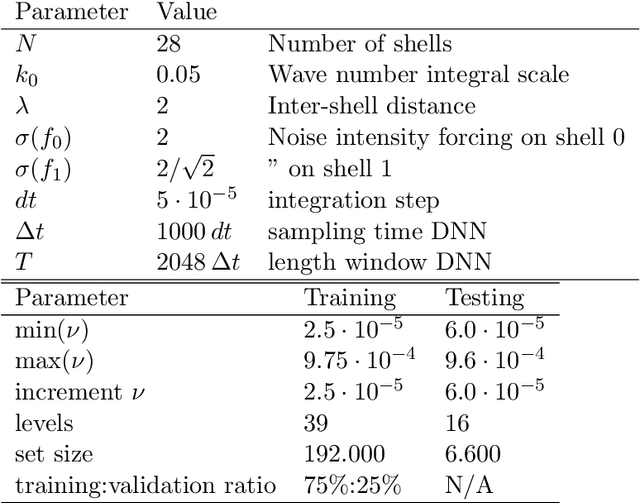Deep learning velocity signals allows to quantify turbulence intensity
Paper and Code
Nov 14, 2019



Turbulence, the ubiquitous and chaotic state of fluid motions, is characterized by strong and statistically non-trivial fluctuations of the velocity field, over a wide range of length- and time-scales, and it can be quantitatively described only in terms of statistical averages. Strong non-stationarities hinder the possibility to achieve statistical convergence, making it impossible to define the turbulence intensity and, in particular, its basic dimensionless estimator, the Reynolds number. Here we show that by employing Deep Neural Networks (DNN) we can accurately estimate the Reynolds number within $15\%$ accuracy, from a statistical sample as small as two large-scale eddy-turnover times. In contrast, physics-based statistical estimators are limited by the rate of convergence of the central limit theorem, and provide, for the same statistical sample, an error at least $100$ times larger. Our findings open up new perspectives in the possibility to quantitatively define and, therefore, study highly non-stationary turbulent flows as ordinarily found in nature as well as in industrial processes.
 Add to Chrome
Add to Chrome Add to Firefox
Add to Firefox Add to Edge
Add to Edge